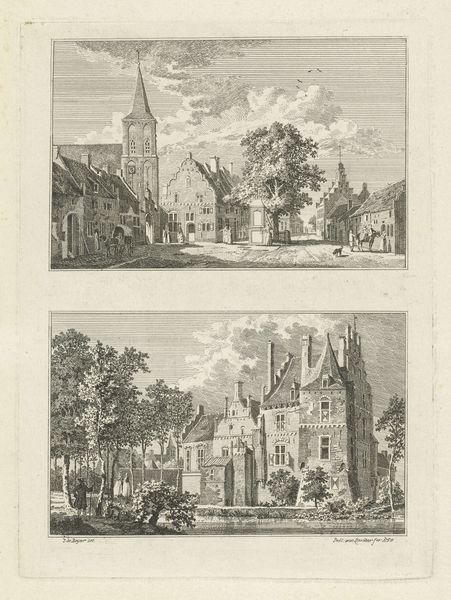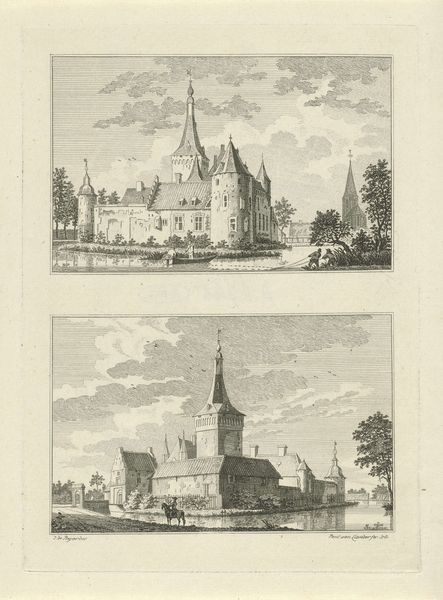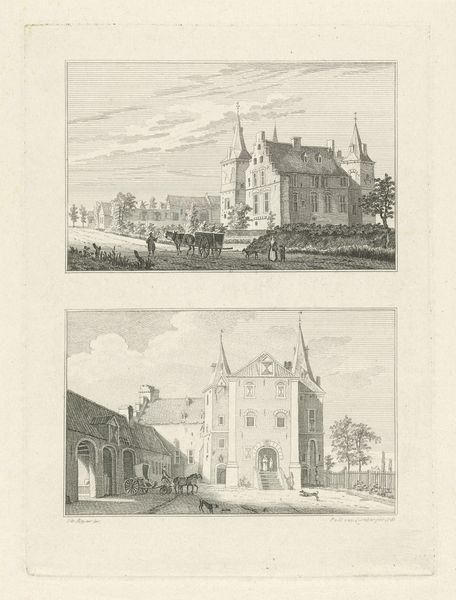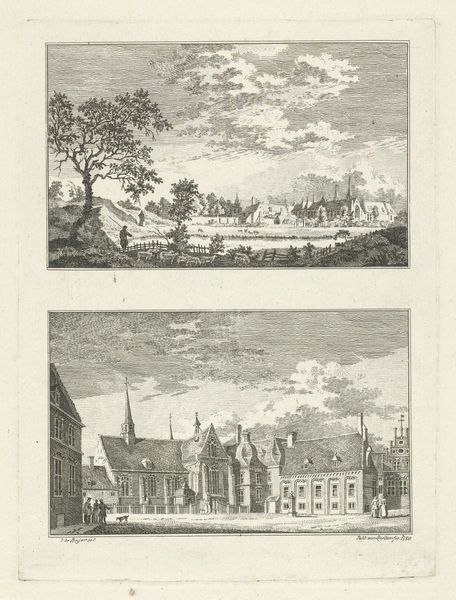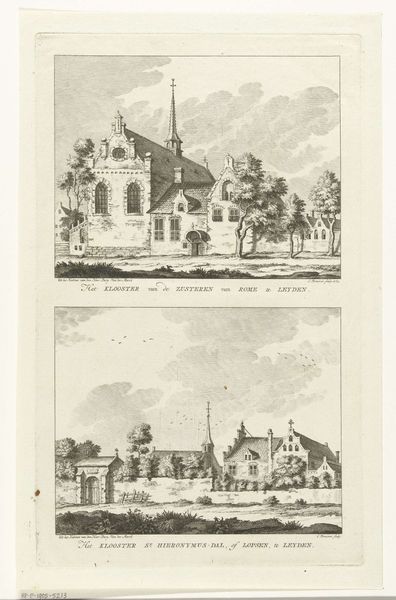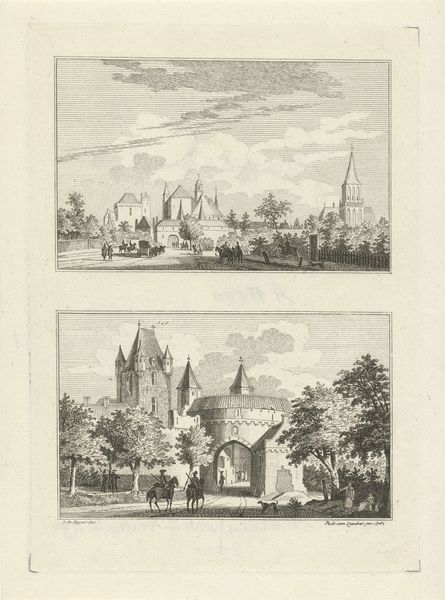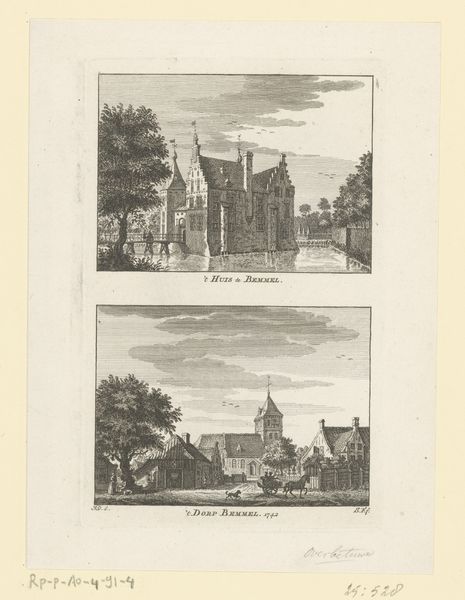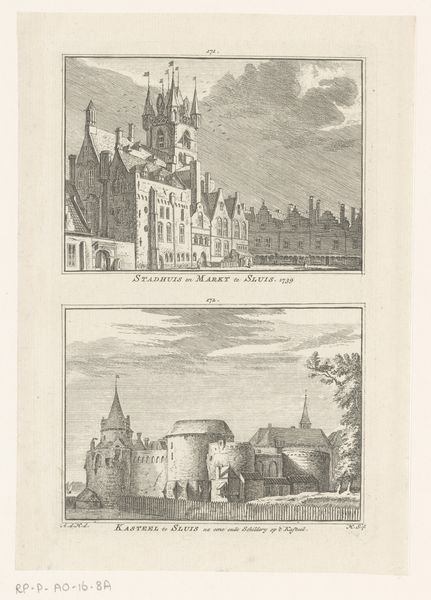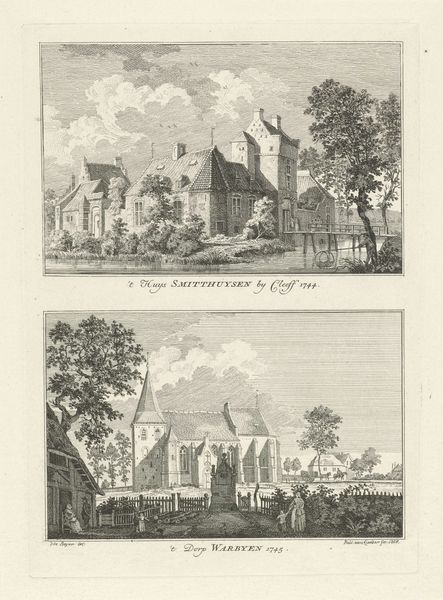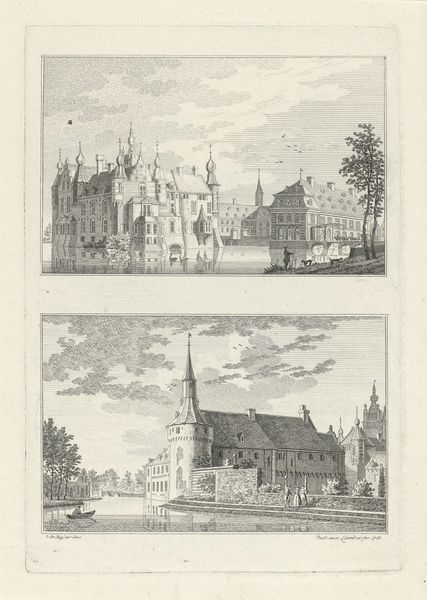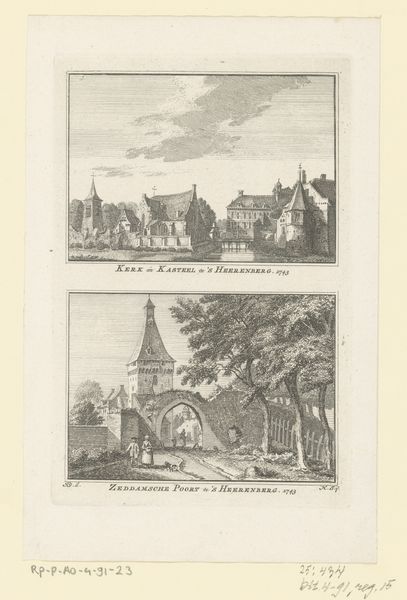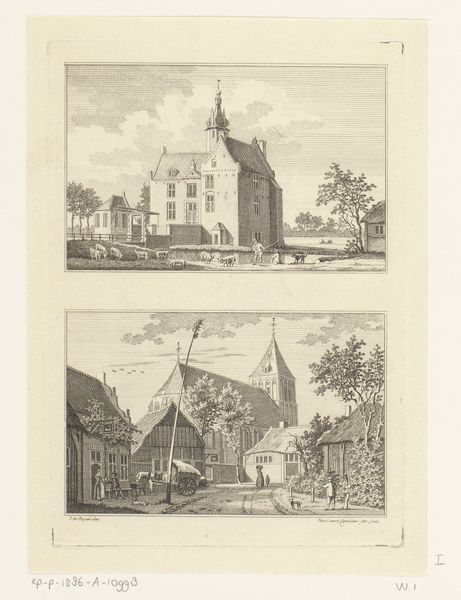
Dimensions: height 193 mm, width 137 mm
Copyright: Rijks Museum: Open Domain
Editor: This print, entitled "Veepoort en Loopoort te Uedem, 1744," was created by Paulus van Liender, and it dates back to 1761. I’m really struck by the detailed line work. How would you interpret these townscapes through a historical lens? Curator: Well, considering the period, the mid-18th century, prints like these served a very specific function beyond just being aesthetic objects. Think about the burgeoning interest in documenting cities and landscapes. These weren't just pictures; they were visual records contributing to a growing sense of civic identity. Consider Uedem’s place within larger geopolitical power struggles. Did representing these fortifications serve to reinforce ideas of regional pride, defense, or something else entirely? Editor: That’s interesting. I hadn’t thought about them as tools for reinforcing civic identity. Does the accuracy of the depiction play a role in this? Curator: Absolutely! While artistic license is always present, there's an element of topographic accuracy that viewers would expect. It suggests a desire to represent Uedem "as it is" – as a place worthy of documentation. And that raises further questions, such as: who was this artwork made for, who was consuming the artwork, and what were their backgrounds and priorities? Editor: So, it's less about personal artistic expression and more about the socio-political function the print fulfilled at the time. Fascinating! I never thought of these prints having so much social and historical weight. Curator: Precisely. And that understanding allows us to look deeper and examine how art actively shapes perceptions and contributes to the cultural landscape. We need to acknowledge how cultural objects operate within a context of power. Editor: This makes me consider cityscapes quite differently from now on. Thank you.
Comments
No comments
Be the first to comment and join the conversation on the ultimate creative platform.
